From the very first day your clumsy pet awkwardly runs around the house, to the last trip to the vet, the years with your furry friend are filled with unconditional love and joy (and some occasional poops.) If only we wouldn’t have to let them go… One Reddit user named abernha3 has recently said his bittersweet goodbyes to his 15-year-old cat Andrew on their final car ride. The Redditor posted 2 pics of Andrew holding his and his wife’s hands with his paw as they were driving to the vet and it has all the feels, writes heavenofanimals.
“Little Andrew was my junior,” abernha3 wrote. “He was 15 and a half and loved everyone, but just got old and sick over the last year. He purred everyday of his life and when he lost that, I knew it was time… He held our hands on his last trip to the vet. Little Andrew was much stronger than his mom and I.”
“He was 15 and a half and loved everyone, but just got old and sick over the last year…”
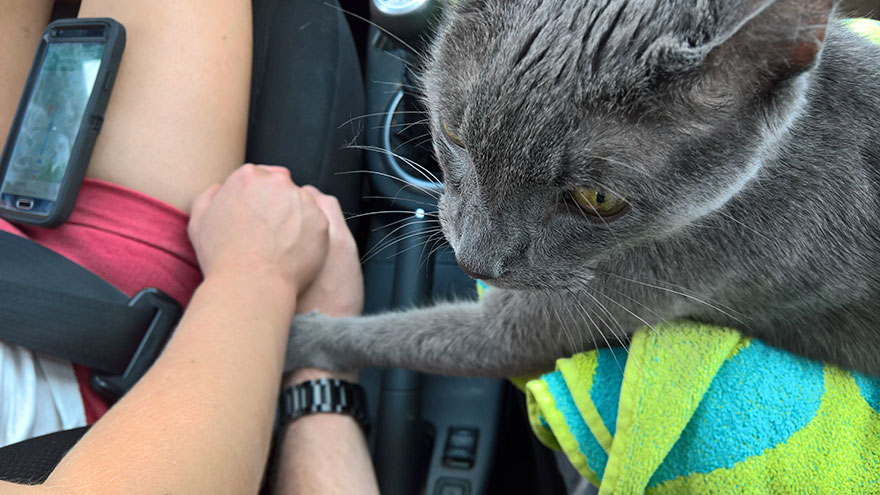
“He held our hands on his last trip to the vet. Little Andrew was much stronger than his mom and I”
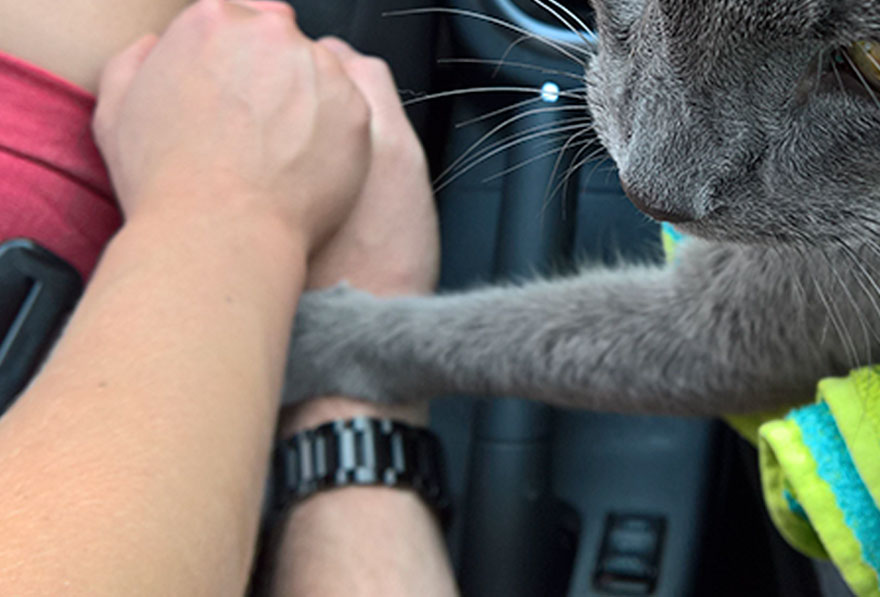
Other people also shared their first and last photos with their beloved cats
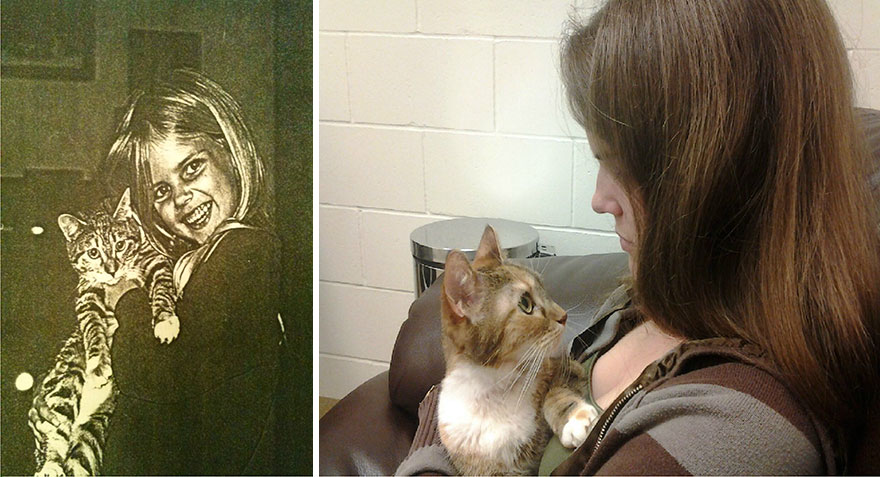
“Love you always, Mopsy”
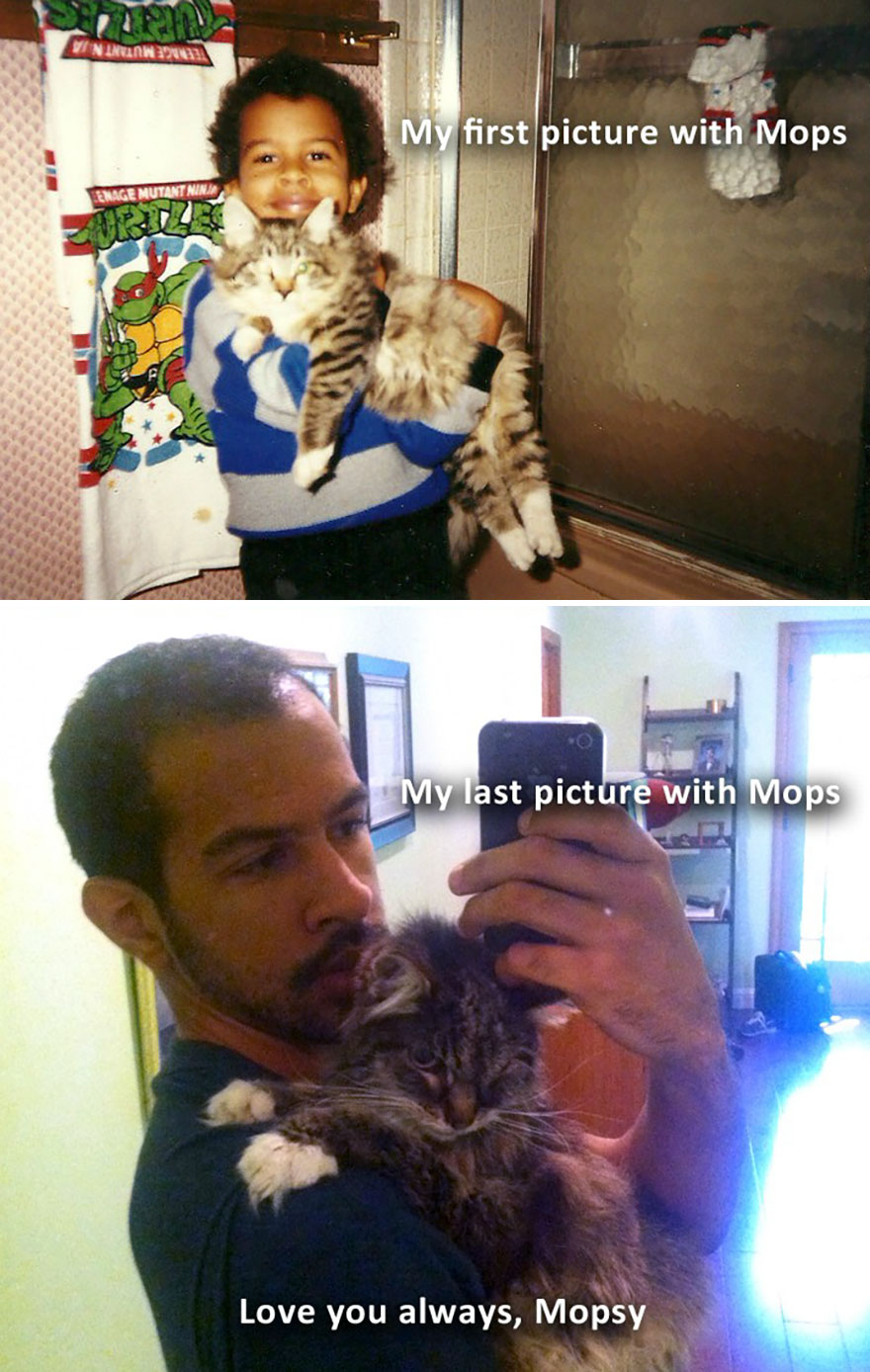
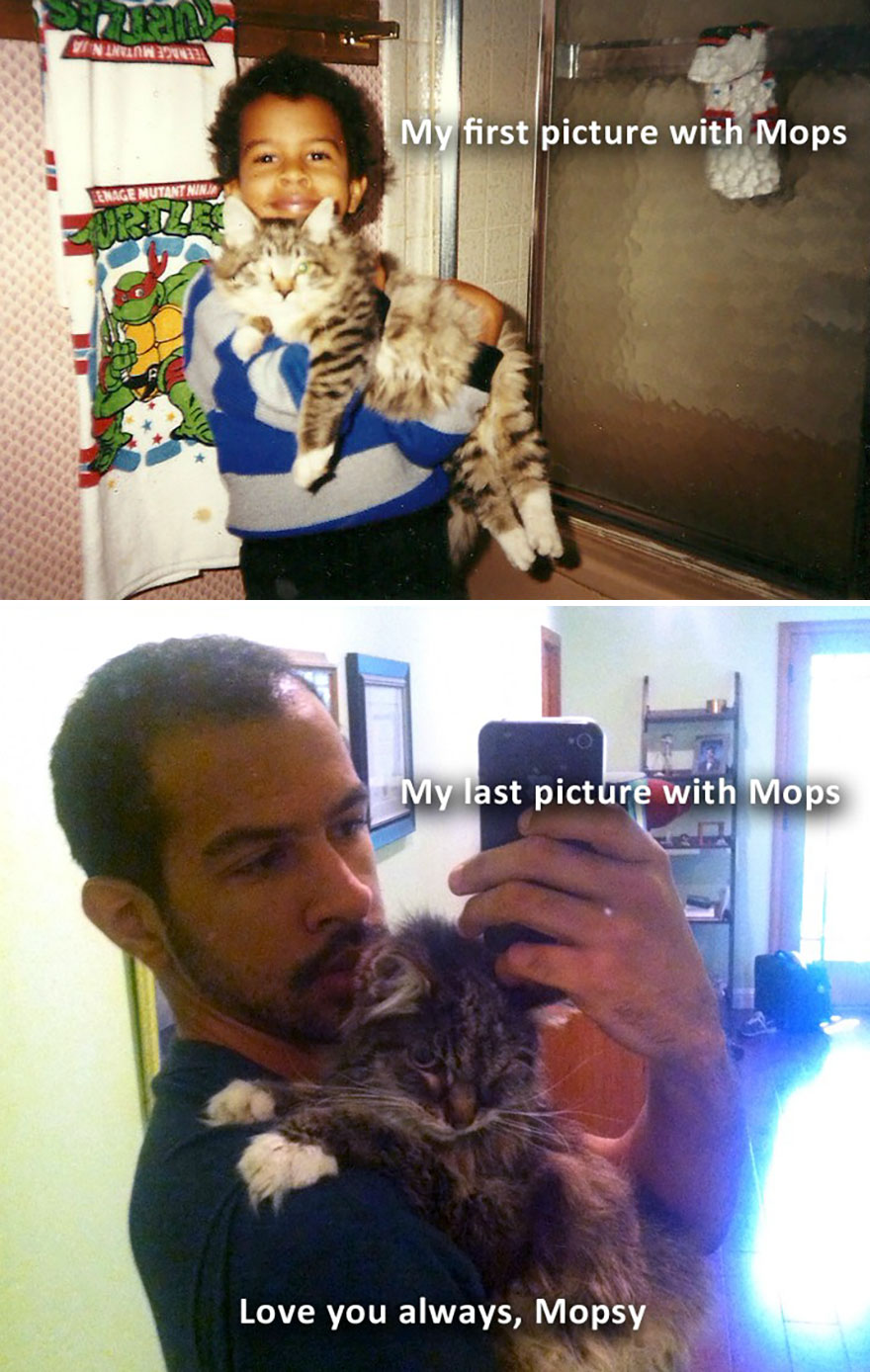
Their love will live forever…

This story originally apeared on heavenofanimals.com
6 Most Common Cat Health Problems
Cats are good at self-maintenance. But even your fastidious feline can't prevent some of these more common cat diseases and health issues.
1. Vomiting
Vomiting is a very common problem with cats with a multitude of causes. They range from eating something poisonous or inedible (like string), to infection, urinary tract disease, or diabetes to hairballs.
Symptoms are usually obvious, and include drooling and abdominal heaving. Vomiting can quickly leave your cat dehydrated, so if kitty continues vomiting or acts ill, call your vet right away. It may help to collect a sample of your cat's vomit and take it with you to the vet.
2. Feline Lower Urinary Tract Diseases (FLUTD)
Some estimates say as many as 3% of cats seen by vets have feline lower urinary tract disease ( FLUTD), which is actually a group of feline diseases with multiple causes.
Female and male cats can get FLUTD, and it often occurs in cats that are overweight or unfit or who eat dry food. Stress, a multi-cat household, and sudden changes can all raise a cat's risk of FLUTD, and treatment depends on the type of FLUTD your cat has.
FLUTD symptoms include:
- Straining to urinate
- Bloody urine
- Urinating in unusual places
- Crying when urinating
- Licking around the urinary area (often because of pain)
- Depression
- Dehydration
- Lack of appetite
- Vomiting
It's always an emergency if your cat can't urinate. Call your vet immediately if you suspect your cat has a urinary tract problem.
3. Fleas
Fleas are a very common external feline health problem. But it's one you can easily treat. Signs your cat has fleas include:
- Flea dirt on its skin (they look like tiny black dots)
- Constant scratching
- Frequent licking
- Red or irritated skin
- Hair loss
- Skin infections or hot spots
Fleas can live for more than a year, and your cat risks anemia if the problem becomes serious, so be sure to treat your cat's flea problem and prevent future infestations.
Talk to your vet about which flea control would be best for your cat. Treatments include oral medication, powders, foams, and topical medication. Fleas are uncommon in Utah. If you adopt a pet from a region outside of Utah or are housing a pet that recently came from another state, please be aware of fleas.
4. Tapeworms
One of the most common feline health problems inside your cat, tapeworms live in kitty's small intestine and sometimes grow as long as 2 feet.
Symptoms of a tapeworm infection can be subtle but may include vomiting and weight loss. The easiest way to tell if your cat has tapeworms is to look at its feces and around its anus. If you see small white worms or what look like grains of rice or sesame seeds, your cat likely has tapeworms.
Treatment options include injection, oral, or topical medication. But because cats almost always get tapeworms as a result of swallowing a flea, be sure to handle any flea problems your cat has before tackling tapeworms.
5. Diarrhea
Many things can cause diarrhea in cats, including spoiled food, allergies, infection, liver disease, cancer, and more.
Symptoms of diarrhea are loose, watery, or liquid stool. Depending on its cause, diarrhea can last for a day, a week, or months.
If your cat has diarrhea, offer kitty plenty of fresh, clean water to prevent dehydration. Then remove kitty's food for no more than 12 to 24 hours. Take your cat to the vet if he or she still has diarrhea after a day or immediately if you notice vomiting, dark, or bloody stools, fever, lethargy, or loss of appetite or if your cat is straining to defecate.
6. Eye Problems
Eye problems in cats can be caused by a number of things, including conjunctivitis, cataracts, glaucoma, trauma, viruses, inflammation, and retinal disease.
A few symptoms that may mean your cat has eye problems include watery eyes, tear-stained fur, cloudiness, red or white eyelid linings, gunk in the corners of the eye, squinting, pawing at the eye, or a visible third eyelid.
Unless you know what's causing your cat's eye problems, there isn't much you can do other than wipe away any gunk with a damp cotton ball. After that, call your vet.




GIPHY App Key not set. Please check settings